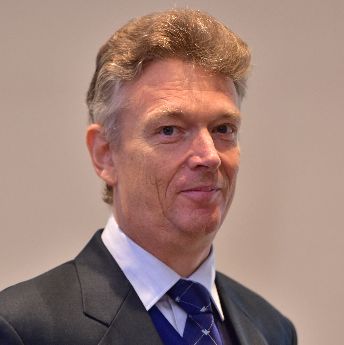The Ebb and Flow of Customer-Centricity in Financial Inclusion Part 1 – Why Being Customer-Centric is a Supply Side Strategy
 by Graham Wright and Evelyn Stark
by Graham Wright and Evelyn Stark Feb 4, 2016
Feb 4, 2016 5 min
5 min
In recent years Human Centred Design has become a new focus area in the financial inclusion world. The blog discusses supply side of the story in designing customer-centric products.
In recent years Human Centred Design became a new focus area in the financial inclusion world. It focused financial service providers on the design of products and services based on customer insights. Design firms became part of the technical provider fraternity, servicing financial service providers in the quest to improved inclusion. At the same time, the definition of financial service providers broadened to include mobile network operators and retail chains, in addition to MFIs, banks, cooperatives and a myriad of MF suppliers. With new entrants come new ideas, and repetition of old ones. One consistent, but underrated idea, is to focus on the customer.
Customer centricity is not a new concept in the microfinance and financial inclusion world. In 1998, MicroSave was set up (by UNCDF/DFID who were then joined by CGAP, the Ford Foundation, and the Austrian and Norwegian governments) to promote savings in the microcredit landscape of East and Southern Africa. Initial research in Uganda, however, revealed microfinance institutions (MFIs) did not have a legal mandate to collect savings, but did have another problem: drop-outs as high as 60% per annum. Further investigation revealed that much of the problem lay in poorly designed credit products. Much of 1999 and 2000 was spent understanding the problem, re-designing products to mitigate it and developing the “market research for microfinance” tools and training. This resonates with the current realisation, that customers are not using products. This is evident in the GSMA research that found that 68 percent of registered mobile money customers, do less than one transaction in 90 days (GSMA, 2015). No frills accounts in India, and transactional accounts in many other settings, are mostly dormant (GAFIS, 2011). The market led research approaches of the “early” years, and the human centred design approaches of the recent years, did not fully succeed in focusing efforts on the customer, nor did it help to increase the use of financial products and services. In the quest to understand this we return to the unfolding story of the early years of market led approaches, based on the MicroSaveexperience.
MicroSave and its partners were quite pleased with the success of the client research and the new, in-depth understanding of their needs and wants. But, self-congratulations were cut short by the first mid-term review in 2000 (unpublished manuscript). Led by industry gurus Beth Rhyne and Marguerite Robinson – MicroSave was, rightly, chided for having focused entirely on the demand side and not addressing the importance of the supply side problems that needed to be solve to achieve real change.
The realisation was that any industry could not be “client-centric” without ensuring that the supply-side organisations who wanted to serve these customers were actually willing and able to serve them. Working with some of the more innovative financial institutions in East and Southern Africa, MicroSave spent the next seven years incorporating client responsive products within “market-led” institutions.
Being Customer-Centric is a Supply Side Strategy…
When one hears supply-side strategy, it conjures up deceptive marketing, product push, sell at all costs and finding new ways to make more money for managers and shareholders. Customer-centricity, we’ve heard lately, should be about researching and understanding the customer. But, is that enough? Being customer-centric must be a supply side strategy if we – this entire industry, including donors, consultants and retail financial services providers – really do want to deliver high-quality products that low-income people want to buy and use.
 Conducting market research with clients had some excellent benefits beyond the product design. All of the MicroSave Action Researchpartners[1] required product champions and staff from throughout their organisations to participate in the research. Virtually all of them came away from the research with a much deeper appreciation of what their clients financial lives were actually like. It became very clear to loan officers that late payments were less a results of “stubbornness”, and more a result of a highly structured loan product that didn’t take into account farm cycles, or sickness, or school fees which needed to be paid before students were allowed to sit for exams. They also were amazed at the knowledge that clients had about microfinance, including what the competitors were offering and informal institutions. MFI staff were energised by the research and excited about designing new products. This is similar to the CGAP experience in supporting the HCD based work with financial institutions in seven countries in recent years. Managers and leaders who are engaging with clients gain understanding and insights beyond the mere reading of reports.
Conducting market research with clients had some excellent benefits beyond the product design. All of the MicroSave Action Researchpartners[1] required product champions and staff from throughout their organisations to participate in the research. Virtually all of them came away from the research with a much deeper appreciation of what their clients financial lives were actually like. It became very clear to loan officers that late payments were less a results of “stubbornness”, and more a result of a highly structured loan product that didn’t take into account farm cycles, or sickness, or school fees which needed to be paid before students were allowed to sit for exams. They also were amazed at the knowledge that clients had about microfinance, including what the competitors were offering and informal institutions. MFI staff were energised by the research and excited about designing new products. This is similar to the CGAP experience in supporting the HCD based work with financial institutions in seven countries in recent years. Managers and leaders who are engaging with clients gain understanding and insights beyond the mere reading of reports.
But, market research and being excited about it is the “easy” part in implementing customer-centric products! Actually delivering the products clients wanted required changes both large and small in:
- Planning, implementing and monitoring pilot-tests Systematically determining whether the new product met clients’ needs or was cost-effective for the institution to deliver was not done. Therefore, these new products were at risk for never being rolled out (CFOs questioned the business case), or not being “sold” (staff continue with the existing, understood, products).
- Costing and pricing Prior to being market-led, many of our institutions looked at their bottom line – not on a per product basis, or even a segmented client basis, but on a whole portfolio basis. Really focusing on the client meant our partners had to make trade-offs to offer what clients wanted, and what they could do at a low cost to serve. Costing and pricing models put all players on the same page, and lead to clearer choices when trade-offs do have to be made.
- Process mapping Efficiency is essential to keeping costs down and most institutions had managed towards efficiency – primarily in the form of group loans, fairly rigid loan-ladders, and as we see now, in the transactional world with a reliance on technology. Unfortunately, efficiency often flies in the face of customer-centricity: not everyone wants to borrow in a group, repay weekly and progress in loan amounts at the same pace as their neighbour. Not everyone wants to use their phone to bank. Process mapping tools helped FSP staff and the leadership see the entire process and enable client-centricity by being more efficient in back-offices and in ways clients may not see, in order to give clients the services they wanted and needed.
- Going to Scale Rolling-out new products and taking them to scale after the completion of a pilot-test is a difficult and complex process. Rollout is a multi-step process of moving a product from the successful conclusion of the pilot test, to the point where it is fully operational in all desired locations. A carefully planned rollout reduces risk of failure, allows you to organise resources and optimise their use, saves money and ensures full and effective management and staff buy-in.
In the next part of this blog, “The Ebb and Flow of Customer-Centricity in Financial Inclusion Part 2 – Beyond the Basics” we discuss what else was needed.
This blog was first published at Center for Financial Inclusion
[1] MicroSave’s action research partners included Equity Bank, Kenya Post Office Savings Bank, Centenary Bank, FINCA-Uganda/ Tanzania, Teba Bank, Tanzania Post Bank, Pride-Tanzania and Uganda Microfinance Union
Written by


Leave comments